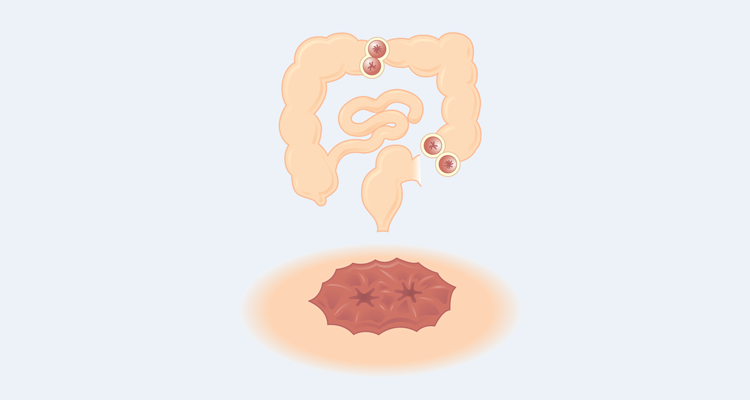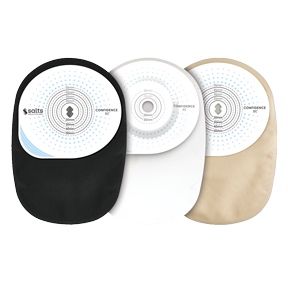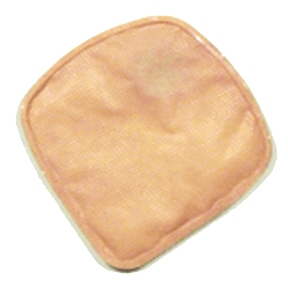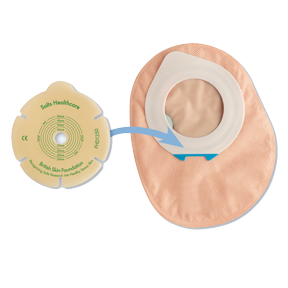Colostomy
Common sites for the creation of a colostomy are from the sigmoid or transverse colon.
A colostomy is formed by bringing any part of the large bowel to the surface of the abdomen. A colostomy can be either an end colostomy or a loop colostomy.
End Colostomy

The digestive system:
Colon (Large bowel)
Colostomy
Rectum
Anus
End Colostomy
Loop Colostomy

Two common sites where you may find loop colostomy situated
Loop colostomy diagram:
Transverse colon
Transverse loop colostomy
Sigmoid loop colostomy
Rectum
Anus
 Loop colostomy
Loop colostomy
A colostomy is normally situated on the left-hand side of the body. It is usually flat to the abdomen, but may protrude slightly. It is pink/red in appearance, like the inside of the mouth, and is soft and moist to touch.
There is no sensation in the stoma and it is not painful. Initially after surgery, it is likely to be swollen and will take a few weeks to reduce in size. The output from a colostomy will normally be a soft formed stool, but this may vary. There is no control over the passing of wind or faeces.
End Colostomy
An end colostomy is formed when part of the colon (large bowel) and/or rectum is removed. The end of the remaining bowel is brought out onto the surface of the abdomen. An end colostomy can be either temporary or permanent.

A temporary colostomy is formed when a diseased section of the colon (large bowel) is removed but for some reason is not safe to re-join the bowel at that time. (Hartmann’s procedure, sigmoid colectomy).

Hartmann’s procedure
If the rectum and anus are removed, the surgical procedure is called abdominoperineal excision of rectum (APER). The perineum will be closed and the stoma will be permanent.

Abdominoperineal excision of rectum (APER)
Loop Colostomy
A loop colostomy can be temporary or permanent. However, a loop colostomy is often temporary and is normally created to divert faeces away from an anastomosis or an obstruction in the large bowel. A loop of colon (large bowel) is brought to the surface of the abdomen and opened to form a stoma. It has a functional end (proximal) which produces faeces; and a non-functional end (distal) which leads to the rectum and may produce mucus.

Two common sites where you may find loop colostomy situated
Closed Products
An individual may wear either one-piece or two-piece product, depending on lifestyle and personal preferences. Many colostomists will wear a one-piece closed pouch, which is normally changed between 1–3 times a day. However, if the output is liquid, a drainable pouch with an open end may be worn, as this can be emptied as necessary and changed daily, or as the person living with a stoma wishes. If they have chosen a two-piece product, the wafer can be changed 2–3 times a week and the pouch changed 1–3 times a day.
Closed stoma pouches are available in a variety of sizes – mini, standard and large – to suit individuals’ requirements. They also come in transparent or opaque, while some have a split cover, which allows the stoma to be seen for inspection. Most modern closed stoma pouches have an integral filter which expels gas to prevent it from building up inside the pouch.
Stoma caps are also available for swimming or intimate times.











